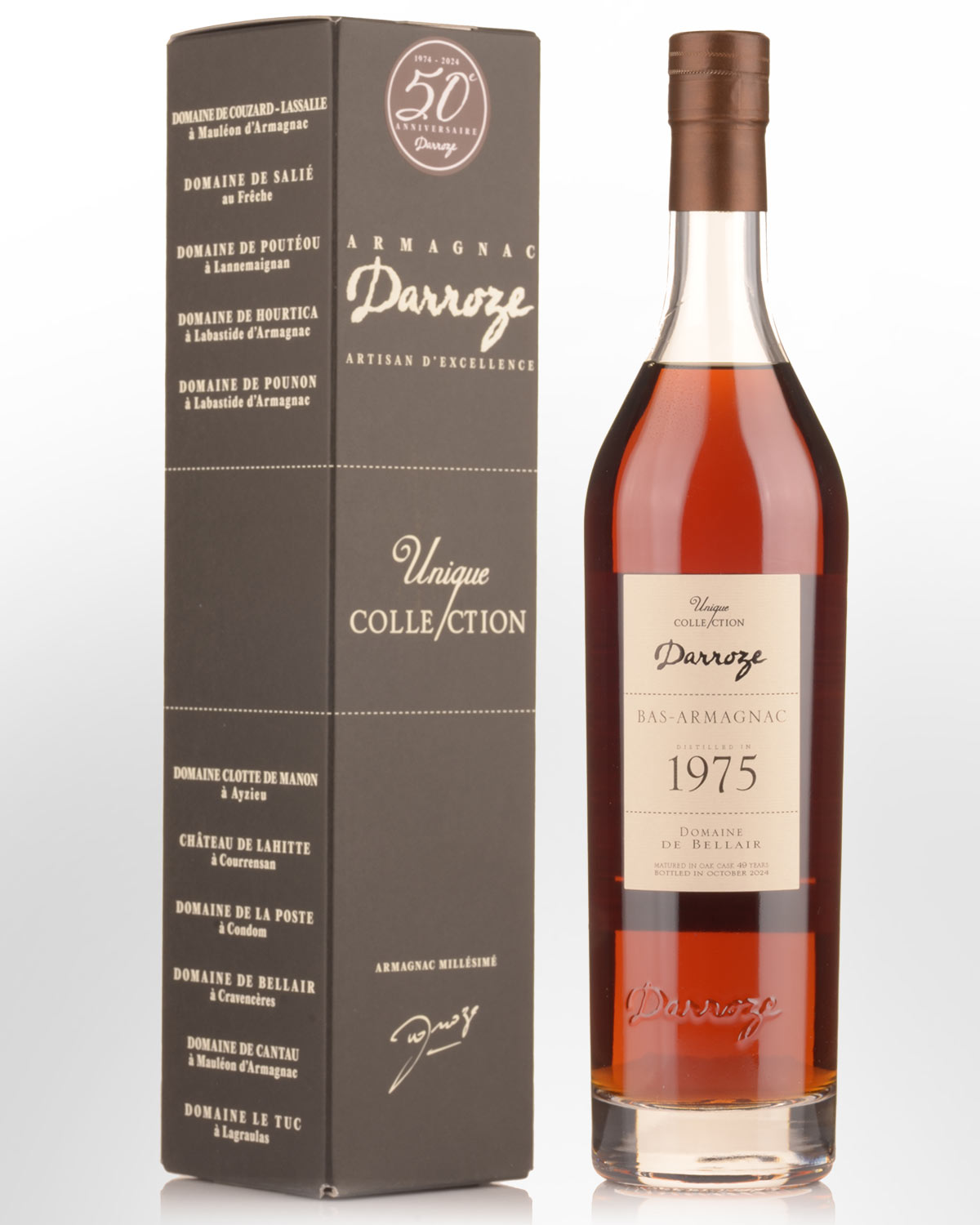
- 91
1975 Darroze Domaine de Bellair 49 Year Old Cask Strength Bas Armagnac (700ml)
This addition to Darroze's ongoing 'Unique Collection' of single vineyard, cask strength brandies is one of the oldest releases to date: distilled in 1975 and bottled in October 2024. It's fairly muted bouquet evokes cinnamon and woody/resiny notes alongside tobacco leaf, developing subtle fruitiness (baked pineapple / citrus), but only after ample time in the glass. The initial taste is bold, typically Armagnac, giving more than the resin-laced bouquet with semi-sweet vanilla and caramel-like flavours accompanied by dried fruit slice. Oak and chewy tannins reign in the mid-palate, leaving an attractive coffee-cake and rancio aspect to contemplate through the final stages. Not exactly the pinnacle of Armagnac, but quite good. Where else can you obtain a 49 year old wood aged spirit for well under $1000? 45.5% Alc./Vol. Tasted from a 30ml sample.
Notes from the producers... look for keynotes of fig jam and brioche apple pie in a long and complex delivery.
Francis and Marc Darroze roam the best estates and terroirs of Bas Armagnac in search of the most beautiful and distinctive brandies. Around 30 estates contribute to their "Unique Collection" with each barrel finishing its ageing in the Roquefort and Labastide d’Armagnac cellars.These are rustic spirits, entering the alembic via small vineyards, distilled by reputable mobile distillers, each demanding several decades of careful ageing in oak barrels in order to express a sense of place and vintage. The typical Armagnac grower raises a range of animals fed by many different crops, plus a small vineyard, part of which is distilled every year and aged in one or more barrels which constitute the savings of the farm. A sick bull, a dying horse or a retiring tractor are repaired or replaced by the sale of a barrel. Multiply the number of farms and vintages and you have the dizzying variety of the Darroze collection: Different because each farm is almost as unique as each barrel. Add to this zero reduction (only through ageing), no caramel colouring as well as labeling transparency and you have Armagnacs that are all about the time in oak (once in glass, nothing improves or changes. An 1890 Armagnac bottled in 1900 is no better than a 2007 bottled in 2017, but collectors don't want you to know that!)
to most of Australia
